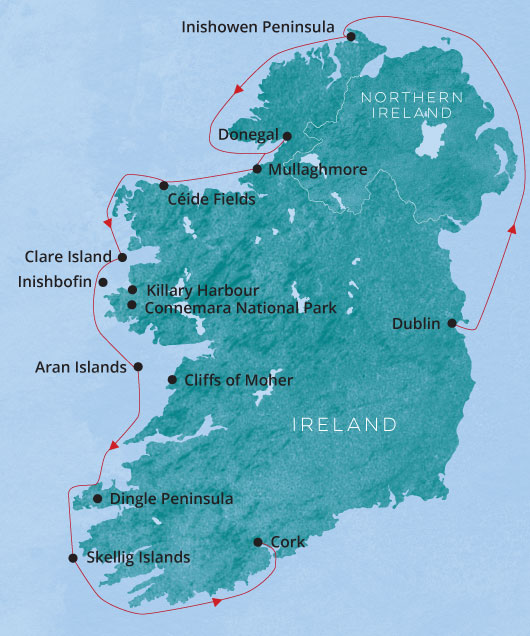
Ireland’s West Coast
STYLE: EXPEDITION-LUXURY
Perched on the edge of the Atlantic, Ireland’s rugged west coast is a journey through hundreds of islands, enchanting peninsulas and fjords, soaring cliffs, crumbling castles and discover unique flora and fauna. If blessed with fine weather, there may be the opportunity to land at UNESCO World Heritage Site, The Skelligs, which host a 6th century beehive hut monastery and an expansive colony of puffins and gannets. Hike through spectacular scenery and explore rarely-visited, forgotten islands and an ancient culture of storytelling, mythology and life intertwined with the Atlantic.
ITINERARY SUMMARY

DAY 1 Dublin, Ireland
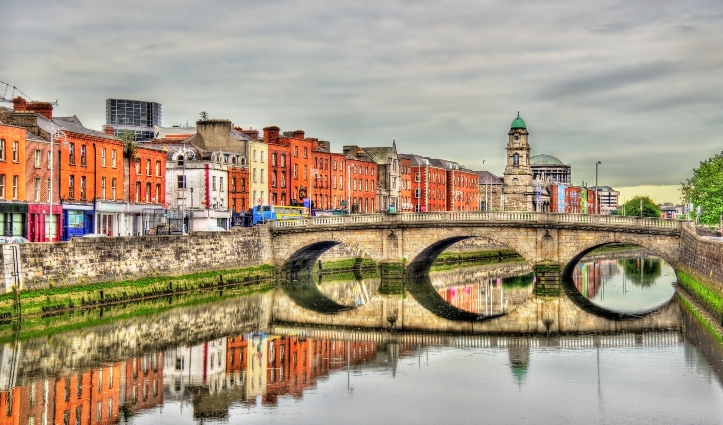
After your arrival into Dublin transfer to your included hotel. After checking into the hotel you have free time to explore this vibrant city at your leisure.
DAY 2 Dublin, embark Greg Mortimer
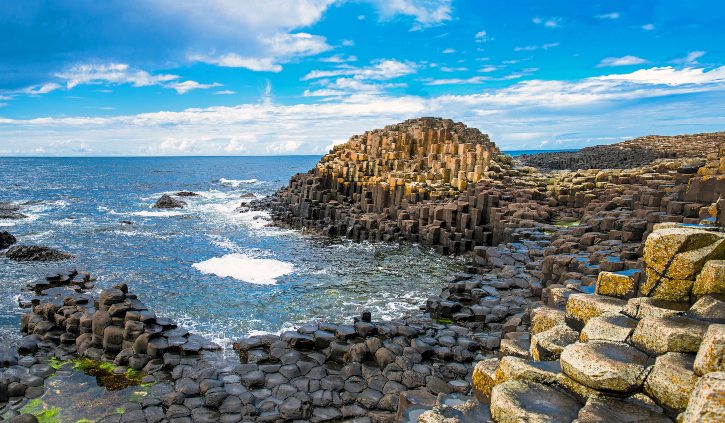
This morning after checking out of your hotel you will have free time to explore or get any last minute essential items you may need for the voyage before meeting back at the hotel at 1pm for a city tour. After the city tour you will be transferred to the port where you will embark the Greg Mortimer. You’ll have time to settle into your cabin before some important briefings from your expedition team.
As you set sail you will cruise past Giant’s Causeway, an area of about 40,000 interlocking and stacked basalt columns that resulted from an ancient volcanic fissure eruption. The stunning geometric sculptural forms, a national nature reserve, and declared a UNESCO World Heritage Site in 1986, resemble a man-made art installation. From the ship, you may also see the ruins of medieval Dunluce Castle, located on the edge of a basalt outcrop overlooking the Atlantic Ocean.
DAY 3 Inishowen Peninsula & Tory Island
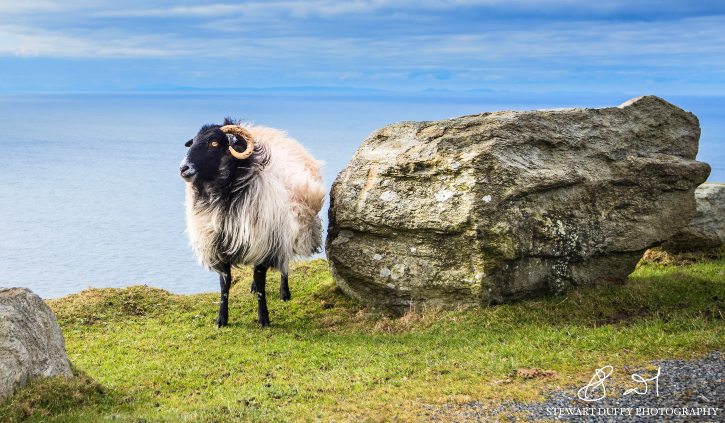
Ireland is blessed with impressive natural scenery: vast valleys, glittering lakes, and cliffs hoisted up from the Atlantic. The jewel in the crown of Donegal is the Inishowen Peninsula. At the peninsula’s tip is Malin Head, Ireland’s most northerly point and a wonderful spot for bird watching as you meander along abandoned beaches along this deserted coastline.
Continue to Tory Island located off the northwest coast of Donegal. Known simply as ‘Tory’, it’s a place that seems to have frozen in time, ruled by its own elected king, and where people still talk of ‘travelling to Ireland’. Tory’s spectacular cliff scenery is complemented by a rich and varied history which is related in the islanders distinctive Gaelic. Many of Tory’s ancient customs still survive, including the appointment of the island king or Rí Thoraí. Colm Cille figures prominently in the history of this sacred island which he chose as a place of retreat and meditation for his monks. Shipwrecks, poitín (a type of distilled whisky) smuggling and tales of violent storms have also been drawn into its folklore. Interesting historical sites include a round tower that once protected monks from Viking raids, the ruins of St Colmcille’s 6th century monastery and the intriguing Tau Cross that suggests early seafaring links to the Coptic Christians of Egypt.
The island also boasts an abundance of rare bird life and wild flower species. However, it is neither the flora and fauna, myths, the monastic ruins nor even the majestic cliffs which make the greatest impression on visitors to Tory. It is the local islanders themselves, and typical of hardworking people who live in remote, the islanders know how to enjoy themselves and they always make visitors feel extremely welcome.
DAY 4 Slieve League Cliffs
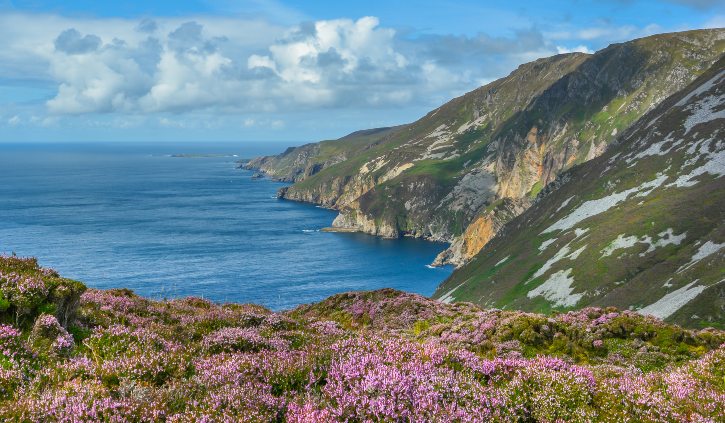
Slieve League Cliffs, situated on the south west coast of County Donegal, are said to be the one of the highest and finest marine cliffs in Europe. There are terrific views of the Atlantic Ocean, the Sligo Mountains and Donegal Bay as you walk towards the terrifyingly high top of Slieve League, where the cliff face of Bunglas rises over 600 metres above the raging ocean.
Less experienced hikers can start from the Bunglas Viewpoint, that offers classic views of the cliffs. Most people only follow the first section of this cliff path, built out of stone steps, but within just 15-20 minutes of climbing, you’re in the wild. Follow the cliffs as long as you’d like, until you’re standing at the highest point of the Slieve League cliffs, watching diving sea birds.
More experienced hikers can continue all the way to the Pilgrim’s Path – a 3 kilometre hike taking approximately 2-3 hours round-trip. The Pilgrim’s Path is narrow and steep. Parts of it can be rocky underfoot, and boggy in other places. The trail’s name comes from the time when Ireland’s Penal laws in the 18th and 19th centuries forced Irish Roman Catholic dissenters to convert to the English Anglican Church. This meant that official Catholic worship was outlawed. However, many Catholics refused to convert, and met secretly to say mass in remote, rural places, such as Slieve League.
DAY 5 Sligo, Mullaghmore
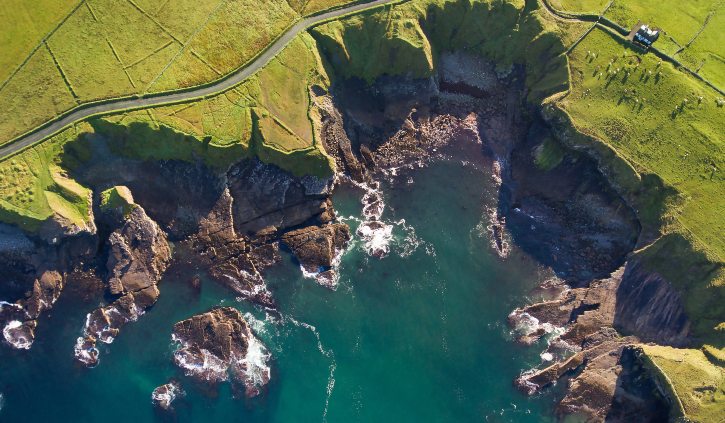
Jutting out of Sligo’s northern edge, the small peninsula of Mullaghmore sits dramatically out into the North Atlantic. Land and sea meet in dramatic confluence along the coast of County Sligo, a dazzling landscape of jagged mountain peaks that inspired the work of Nobel-winning poet William Butler Yeats. Mullaghmore resides in the shadows of iconic Benbulben mountain, undoubtedly Ireland’s most distinctive mountain, sometimes referred to as Ireland’s own Table Mountain. The most distinctive peak among the Dartry range, it was formed during the ice age by massive glaciers segmenting the landscape.
On the Benbulben Forest Walk (1.5 hours, suitable for all ages and abilities), the trail begins in a secluded forest area before opening out to stunning views of Benbulben head. Further along the walk offers superb panoramic views of Donegal Bay, Slieve League Cliffs, Mullaghmore and Classiebawn Castle. And, of course, Yeats himself is buried “Under bare Ben Bulben’s head,”, as he predicted in one of his poems – his grave can be found in Drumcliff cemetery, not far from the foot of the mountain. The mountain’s most noted reference in Yeats’s poetry is in the work Under Ben Bulben, in which he describes horsemen who “ride the wintry dawn/Where Ben Bulben sets the scene”.
Alternatively, embark on the Mullaghmore Head Walk (2.5 hours, suitable for all ages and abilities). This walk is an easy walk along the stunning coastline of Mullaghmore consisting of a mixture of footpaths, off-road walking trails and public roads, offering stunning panoramic views of Donegal Bay and Slieve League beyond as well as of Benbulben and the Dartry Mountains.
Mullaghmore village, is largely the vision of Henry John Temple, better known as Lord Palmerston, who served two terms in office as British Prime Minister. He inherited a large estate of 10,000 acres in north Sligo, and not only instigated the building of Classiebawn Castle, the dominant landmark of the area, but also the magnificent stone harbour and the main buildings that characterise the village today.
After your morning of hiking, return to the ship for lunch. In the afternoon, land on one of the offshore islands to see a protected wildlife sanctuary and a 6th century monastic, where the discovery of a cist burial and carved ‘cursing’ stones suggests prehistoric occupation.
DAY 6 Céide Fields & Clare Island
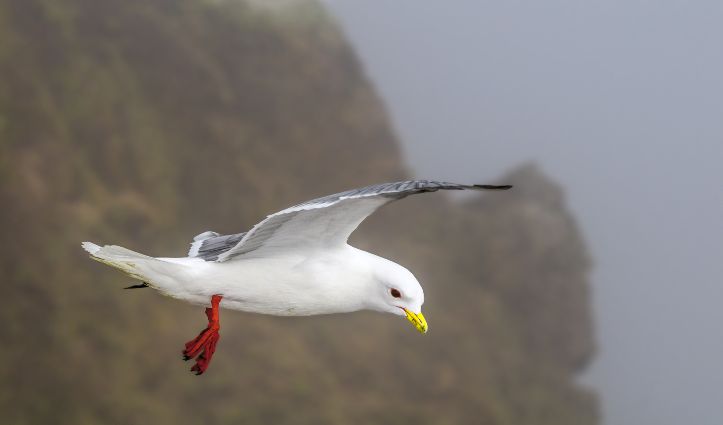
Ireland’s Stone Age ancestors constructed houses, walls and fields that created an early farming community complete with megalithic tombs. One of these communities was Céide Fields, which contains the oldest known stone-walled fields in the world – dating back nearly 6,000 years. Céide Fields overlooks the mighty Atlantic Ocean pounding against the cliffs below. The landscape itself has been forged from the dramatic upheaval and movement of the earth’s crust over millions of years.
Visit the remarkable Céide Fields Interpretative Centre. The centre has won several awards, including the Gold Medal for architecture. It is located beside some of the most spectacular cliffs and rock formations in Ireland and a viewing platform is positioned on the edge of the 110m high cliff. One of the exhibits that confronts visitors upon entering the centre is a 4,000-year-old pine tree that was unearthed from nearby bog land.
Clare Island is a mountainous island guarding the entrance to Clew Bay in County Mayo. It is famous as the home of the pirate queen Grace O’Malley (Granuaile), who was known as a tyrant of the ocean, clan chieftain, mother, wife, survivor and brilliant politician. Although her deeds relatively unknown outside of Ireland, the legacy of her mastery survives in the ruined monuments and the folk-consciousness on Clare Island and Ireland.
Clare is the largest and highest of Clew Bay’s many islands, with dramatic coastal cliffs and spectacular views of one of Ireland’s best-known peaks, Croagh Patrick. Its spectacular cliffs are home to large numbers of nesting sea birds and its hills, bogs and woodlands make it ideal for hill walking, with a variety of walks and climbs to suit all fitness and interest levels including: Archaeological Trail, Fawnglass Loop and Knocknaveena Loop.
DAY 7 Hiking Inishboffin
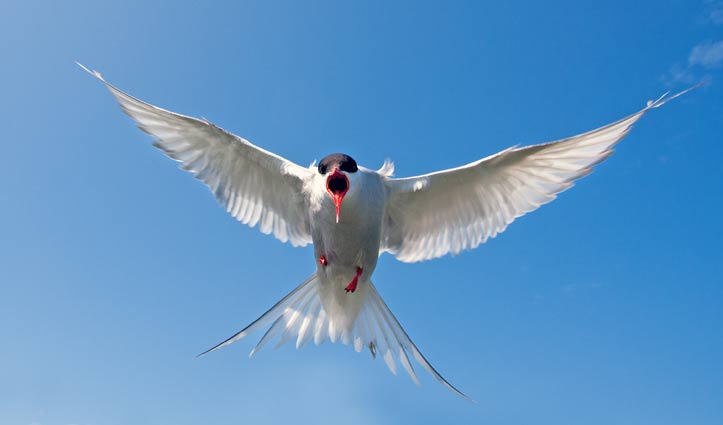
Given the moniker “The Enchanted Island”, Inishboffin is set in the wild splendour of Connemara amid the magical beauty of sea, cliffs and mountains that make up the Galway-Mayo coastline. With its westerly position and its protected harbour, Inishbofin was one of the most important shipping havens on the West coast of Ireland. It was one of the last Royalist strongholds to fall to Cromwell’s army. The ruins of Cromwell’s impressive star-shaped fort from 1656 still overlook the harbour. Inishbofin is also home to “Dún Gráinne”, the remains of a fort used by the legendary Pirate Queen, Grace O’Malley from neighbouring County Mayo. It is also home to a second Celtic fort which dates all the way back to 1000 B.C.
The island is a breeding area for many bird species, the rarest or most threatened of which is the corncrake. Other species include common tern, Arctic tern, fulmars, shags, guillemots, various gulls, Manx shearwaters, and choughs. Inishbofin offers three looped walks, all with stunning views of the Islands beautiful scenery and birdlife.
Westquarter Loop
(2hrs – 2.5 hours)
The Westquarter loop takes in some of the most stunning Atlantic Coast scenery in Connemara offering views of the Island’s blow holes and sea arch, sea stags where the Island seal colony can be seen, the Dún More Cliffs and Iron Age promontory fort ruins. The walk also offers views of Inishark Island.
Cloonamore Loop
(2hrs – 2.5 hours)
The Cloonamore Loop runs over green roads, bog roads and laneways along the beautiful East End Beach and St. Colman’s 14th Century Chapel and Church Lough. You can experience a fertile valley which supports reed beds that support a wide variety of birds.
Inishbofin Middlequarter Loop
(1.5 – 2 hours)
This walk runs over Inishbofin’s second highest point, which on a clear day offers panoramic views of Achill Island’s mountains, Inishturk and Clare Island, the Twelve Bens, Maumturks and Croagh Patrick. The trail takes in Inishbofin’s historic and varied Iron and Bronze Age landscapes with mill stones, partitions and evidence of round stone houses. After lunch back on board and some well-deserved time to unwind, enjoy an afternoon cruise along Killary Harbour.
It has been described as Ireland’s only true fjord; carved by glaciers and deeper along parts of its length than it is at its mouth. It forms the border between Galway and Mayo counties and features some of the most spectacular scenery on the west coast. This deep-water inlet from the Atlantic was once a hiding place for U-boats in World War Two. The sheltered fjord is also a real treat for birdwatching, with nationally important populations of many species, including ringed plover, mute swan, whooper swan, mallard duck, tufted duck, and barnacle goose. Dolphins areoften seen in the fjord, along with otters, a protected species that are known to breed at Killary Harbour.
Breathtaking mountain vistas provide a dramatic backdrop for Leenane, a town nestled beside the water at the head of the fjord. In 1903, Leenane played host to King Edward VIII and Queen Alexandra when they made a tour of Connemara including a visit to nearby Kylemore. Visit the Sheep and Wool Centre in the town centre that includes an excellent museum featuring the history of sheep farming and the woollen industry in Connemara, along with a gift shop and café.
DAY 8 Hiking Connemara National Park

Connemara is Irish landscape at its most dramatic. With soaring mountains, scattered loughs and an intricate coastline, this remote part of Galway is a world away from the bustle of urban life. This morning, enjoy the Killary Harbour Coastal Walk, also known as the ‘Famine Trail’, where you’ll walk past little cottages that faced extremely gruelling times during the 1840s. In recent times, Killary Harbour has become a centre for aquaculture, with mussels being farmed in the deep, clear waters of the fjord. Fish cages belonging to a salmon farm and mussel rafts are a prominent feature. This spectacular walk offers views of dramatic Mweelrea Mountain towering at your side.
Reboard the ship at Rosroe pier to enjoy lunch and some rest you prepare for an afternoon of more superb hiking inside Connemara National Park, one of the best places in Ireland to hike.
Diamond Hill Loop Walk
(7 km)
Grading: Difficult
Your starting point is the visitor centre at the Connemara National Park. There are gravel footpaths and wooden boardwalks on the approach to the mountains, with a steady climb up the western slopes to the summit ridge. The trail offers blanket bog ecology, extensive heather, stunning views of the mountains, Inishturk, Inishbofin and Inishshark islands and coastline and the possibility of wildlife.
To the north and east, the Twelve Bens are nothing short of sensational. To the northeast, Kylemore Abbey’s gothic turrets stand out from neighbouring Kylemore Lough; and directly north, the summit of Mweelrea, Connaught’s highest mountain, can be seen peeping out. There are some steep sections that require the use of hands. Terrain includes stone steps, trail, and surfaced minor road. It can be quite windy on top so bring appropriate clothing.
For those after an easier and shorter hike, the Lower Diamond Hill trail is an excellent option. It’s a 3 km with a duration of 1.0 -1.5 hours. The walk offers some fantastic views of the surrounding Connemara countryside.
DAY 9 Inishmore, Aran Islands
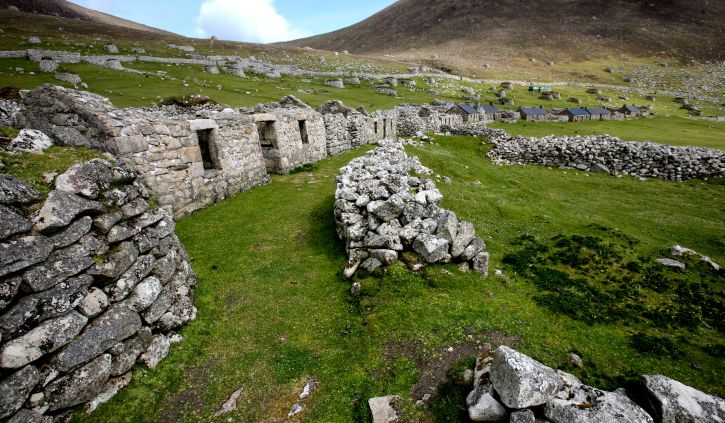
Perhaps the most famous of Ireland’s isles, Galway’s Aran Islands are synonymous with traditional Irish culture, language, music and tradition. Famed for their wild landscapes, distinctive knitted jumpers and pretty thatched cottages, the picturesque Aran Islands never fail to impress visitors. The islands form part of one of Ireland’s several protected Gaeltacht regions where Irish rather than English is the spoken language.
Inishmore (Inis Mór) is the largest of the Aran Islands and has been attracting visitors to its rugged shores for generations. The island is home to over 50 different monuments of Christian, pre-Christian and Celtic mythological heritage. The geology is an extension of the famous limestone rocks of The Burren, where limestone pavements crisscrossed with grikes, host a plethora of, often extremely rare, wild flowers such as gentian violets and orchids. The landscape of Inishmore is a patchwork of fields hemmed in by precariously balanced drystone walls.
Explore Inishmore, including a visit to the island’s most celebrated monument, Dún Aonghusa, considered to be one of the best examples of its kind in Europe. Occupying a site of 14 acres, Dún Aonghusa is a fort that consists of three terraced walls surrounding an inner enclosure containing a platform on the edge of a 100-m high cliff. The views from it are breathtakingly spectacular. Excavations carried out in the 1990s indicated that people had been living at the hill top from c.1500 BC with the first walls and dwelling houses being erected c. 1100 BC. A remarkable network of defensive stones known as a Chevaux de Frise surrounds the whole structure.
Late Bronze Age objects such as rings, tools, beads and foodstuffs found on site are now in Dublin’s National Museum. Archaeologists and scholars from all over the world visit the site annually, and some scholars suggest that the platform overlooking the Atlantic Ocean may have had ritual significance. The Dun Aonghasa Visitor Centre is located on the edge of Kilmurvey Craft Village and provides a wealth of information about Dun Aonghasa, the cliffs, and the Aran Islands in general. It has a number of exhibits and educational materials which are set out in a simple way as so most people can get a good understanding of Dun Aonghasa prior to entering the site itself.
You have the option of reaching Dún Aonghasa from the pier at Kilronen village by bicycle (6 km) or by coach.
From Dún Aonghasa, you can walk to the Worm Hole, a natural rectangular shaped pool into which the ocean ebbs and flow at the bottom of the cliffs south of Dún Aonghasa. The Worm Hole has recently become more popular since it has become a venue for the Red Bull Cliff diving competition. From Dún Aonghasa the walk to the Worm Hole follows the cliff-edge and offers dazzling ocean views. Back at Kilronan village, where the ship awaits, you can brave a chilly swim in the turquoise water, people watch, or you relax and enjoy a coffee or a pint of Guinness.
DAY 10 Cliffs of Moher
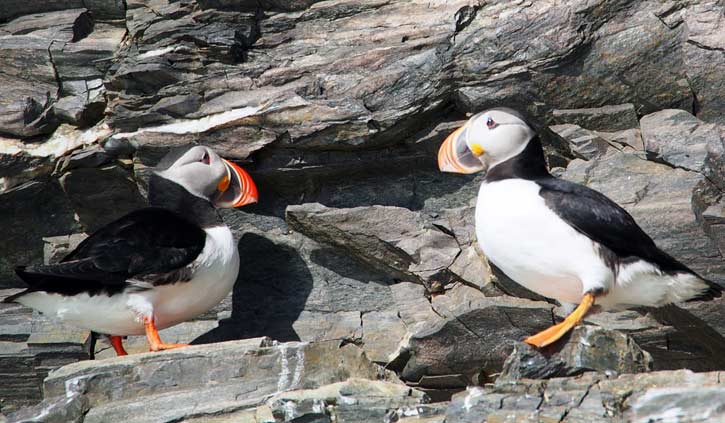
People visit the Cliffs of Moher for a number of reasons – to see the staggering height of the rock face that soars 214m above the pounding waves, and the even more staggering beauty of the views from the top. In the morning, you will view the Cliffs from the comfort of the ship as we sail along the coastline before anchoring at a nearby village, ready to disembark for an exhilarating shore excursion hiking across the clifftop at the UNESCO-recognised Burren and Cliffs of Moher Geopark.
Starting in Liscannor, the closest town to The Cliffs of Moher, explore some of the town’s fascinating archaeological sites including the 5th century Kilmacrehy church and a fine example of a Holy Well (St. Brigid’s Well) dating back to pre-Christian times. At the Cliffs of Moher, tread carefully nearly one-kilometre of cliff edge paths and viewing areas, enjoy the gothic style 19th century O’Briens Tower and the eco-friendly underground visitor centre building containing visitor services and facilities, gift shop, restaurant & coffee shop and the award-winning Atlantic Edge Exhibition.
Stretching for 8 km, the Cliffs of Moher are one the most spectacular sights in the Burren. On a clear day it’s possible to see as far as Galway Bay in the north to the Blasket islands in the south. The rocks that make this cliff formation were formed over 300 million years ago and it’s easy to see the layers of sandstone, siltstone and shale. A variety of coastal landforms can be found here including sea caves, sea arches, sea stacks and sea stumps formed by the constant erosion of the cliff face.
As a special protected area (SPA) for seabirds the Cliffs are home to over 30,000 pairs of seabirds. Internationally significant numbers of both Guillemots and Razorbill can be found here along with puffins, kittiwakes, fulmars, peregrine falcons and choughs.
DAY 11 Dingle Peninsula
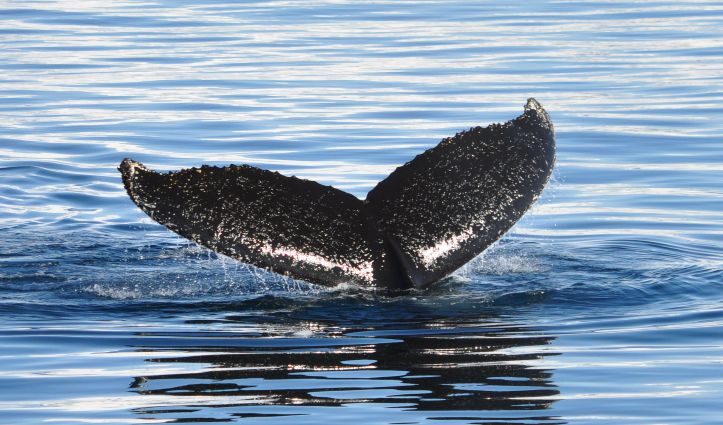
There are over 2,500 archaeological sites on the Dingle Peninsula, spanning a period from 6,000 BC through to 1700AD. The area is regarded as having one of the richest concentrations of archaeological monuments in Western Europe. National Geographic once described it as “the most beautiful place on earth”, and more recently, one of the locations where Star Wars was filmed, at Sybil Head.
You will enjoy a ship cruise at Great Blasket Island, and perhaps launch the Zodiacs allowing you to get closer to the cliffs to perhaps get a glimpse of the huge number of breeding seabirds such as puffins, fulmars, guillemots, storm petrels and shearwaters. In the water, you may be lucky and encounter dolphins, whales, orcas and porpoise.
After lunch, you anchor at Dingle and embark on a guided tour of some of Dingle Peninsula’s ancient sites. The tour travels west of Dingle Town on the Slea Head route, considered one of the most scenic landscapes in Europe. Among the sites visited are Ogham stones, monastic sites, beehive huts, ringforts, medieval churches, holy wells, Gallarus oratory.
Afterwards, visit the renowned Dingle Distillery for a tour of their facility where you can learn about the production process of their gin and vodka as well as enjoy a tasting. The distillery is not in the business of creating megabrands, nor do they distil for anyone else. Their scale is modest, their approach to what they make is essentially artisan and they have rekindled the tradition of independent distilling in Ireland. Two hundred years ago, this small island had over a hundred officially recognised distilleries; by the turn of this century there were two. Their unique Dingle Whiskey continually matures in the mild, moist climate of Ireland’s south-west coast while those first spirits are bottled into a magnificent single malt whiskey. You can also enjoy the fruits of their labours in the form of Dingle Original Gin and Dingle Distillery Vodka.
DAY 12 Skellig Islands
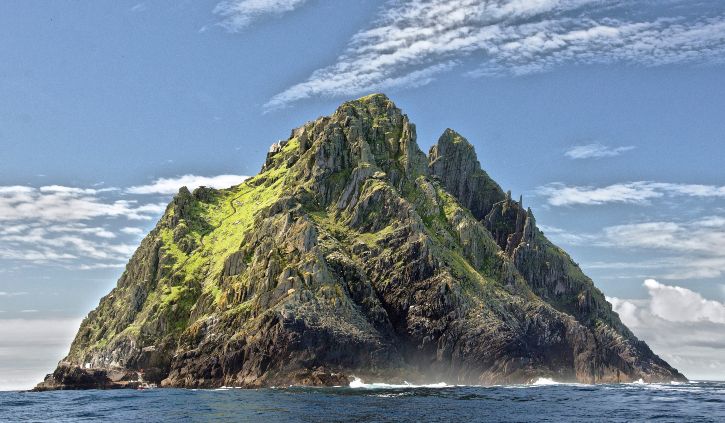
Off the coast of County Kerry, two rocky pinnacles rise from the Atlantic Ocean. These spectacularly Skellig Islands are world-renowned for their ornithological and archaeological significance. Skellig Michael is known throughout the world of archaeology as the site of a well-preserved monastic outpost of the Early Christian period – now designated a UNESCO World Heritage Site; Small Skellig is equally renowned in matters of ornithology as the home of roughly 27,000 pairs of gannets – the second largest colony of such seabirds in the world.
Enjoy a ship cruise around Small Skellig to get a glimpse of the incredible gannet colony on the island. Afterwards, you will dock at Portmagee, and with the blessing of fine weather, your expedition team plans to visit and land on Skellig Michael.
Approximately 1,400 years ago a small group of men were searching for a place to practice their religion in complete solitude and isolation. These remarkable men ventured into the open ocean off southwest Ireland determined to build a monastery on one of the most extraordinarily remote locations on earth. Generation after generation of monks helped to hand-carve the 600 stone step with the simplest tools, to build a hilltop monastery 200 m above the pounding waves. The monastery has six corbel stone beehive huts and two boat-shaped oratories. The survival of the terraces and drystone walls to this day are testament to the skill and dedication of the monks. The monastery is inscribed as a UNESCO World Heritage Site, a striking example of Early Christian architecture. The archaeological remains show the dramatically spartan conditions in which the monks lived, and after enduring several Viking raids, the monks eventually left the island in the 13th century. The site has subsequently become a place of Christian pilgrimage.
After lunch, disembark at Castletown-Bearhaven for late-afternoon hikes at Beara Peninsula. On the Bullig Bay Loop Walk (4 km – one hour), starting near the ruin of Dunboy castle – seat of the O’Sullivan Bear clan who ruled the Beara Peninsula for 600 years, the walk offers a pleasant mix of farmland, quiet country road & forest tracks, and wonderful views of Bullig bay and Bear Island. If you’re after a shorter walk, nearby Dinish Island, offers a 15-minute walk around the Island.
DAY 13 At Sea
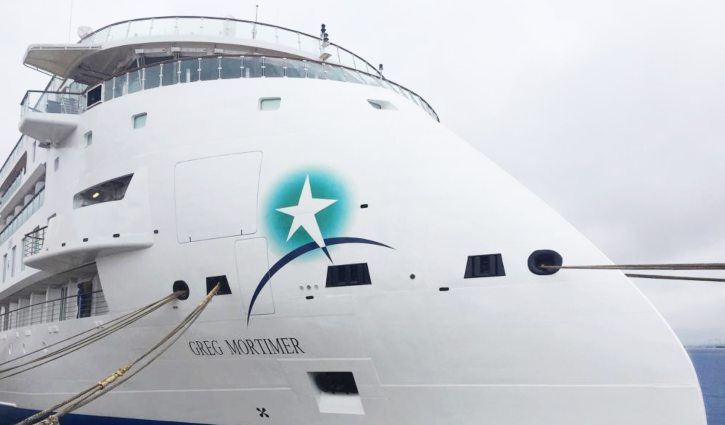
Use this day at sea to organise your photos and use the ships facilities. Enjoy a lecture from one of the expedition team and enjoy the common areas with your fellow travellers reveling in your wonderful trip.
DAY 14 Disembark in Dublin

During the early morning, you will cruise into Dublin port. At approxomately 8am you will disembark. A transfer to a hotel or to the airport is included.


